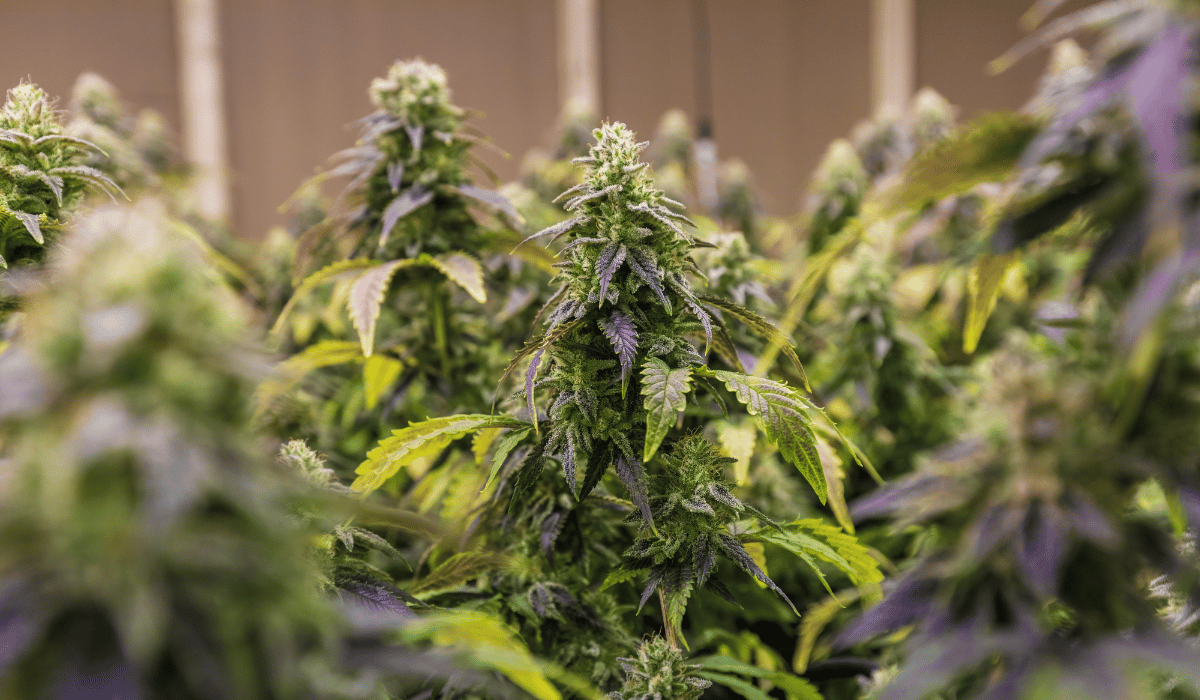While not as well-known as CBD or THC, raw cannabinoids such as cannabidiolic acid (CBDA), are becoming more popular due to their potential health and wellness benefits.
The term ‘raw cannabinoids’ refers to the chemical compounds found in the cannabis plant in their natural form, before they have undergone the process which converts them into those which are now consumed in a wide range of wellness products.
The two primary raw cannabinoids found in cannabis are THCA (tetrahydrocannabinolic acid) and CBDA (cannabidiolic acid).
CBDA is the compound which converts to CBD once exposed to high levels of heat over time, through a process called decarboxylation.
Similarly, THCA is the precursor to THC (tetrahydrocannabinol), the well-known intoxicating compound responsible for the ‘high’ associated with recreational cannabis use. However it’s worth noting that in the raw form, neither CBDA or THCA produce any intoxicating effects.
READ MORE: CBN, CBC and CBDA – the cannabinoids to have on your radar
Just as CBD and THC have become widely known for their medicinal potential, raw cannabinoids are also starting to gain attention for their potential therapeutic properties.
Raw cannabinoids produce different effects to those which have been decarboxylated and although research is in its early stages, some people consume cannabis in its raw state for these associated benefits.
What are the potential benefits of CBDA?
CBDA is gaining particular interest due to its reported health benefits which include anti-inflammatory and anti-oxidant effects (which could help protect cells from oxidative stress and damage), as well as pain management.
Researchers have discovered that unlike CBD, CBDA does not bind directly with the CB1 or CB2 receptors; instead, it interacts with the endocannabinoid system by inhibiting the cyclooxygenase-2 (COX-2) enzyme, responsible for pain and inflammation. This is the same way that other common nonsteroidal anti-inflammatory drugs (NSAIDs), such as Ibuprofen, are known to tackle inflammation.
As inflammation plays a role in many chronic conditions and is often the cause of pain, CBDA’s pain-relieving properties could be beneficial for individuals dealing with a range of chronic pain conditions.
There is also some evidence to suggest that CBDA can help reduce nausea and vomiting, making it a potential option to help patients manage the side-effects of conventional cancer treatment such as chemotherapy. One study found that when taken alongside low-doses of the anti-nausea drug ondansetron (OND) – which is often prescribed to chemotherapy patients – CBDA was more effective than CBD in reducing nausea and anxiety.
While most studies have focused on the effects of CBD on anxiety, this study and others have indicated that CBDA might also have anxiolytic (anxiety-reducing) and antidepressant properties, which could potentially contribute to helping stabilise mood and reducing stress.
In addition to this, some preliminary studies have suggested that CBDA might have anti-cancer properties. It has been explored for its ability to inhibit the growth of certain types of cancer cells, and one study identified its potential to limit the migration of aggressive breast cancer cells in a lab setting.
A viable clinical treatment?
It’s important to remember that compared to CBD, relatively little research has been carried out on CBDA. While the potential health benefits are promising, these are based on early studies and more research, including human trials, are needed to really understand its effects and safety profile. More research is also necessary to help medical professionals establish optimal dosing and administration methods.
As CBDA is quite an unstable compound, it has not traditionally been considered a viable option for clinical treatment.
However, the late Professor Rapheal Machoulam – who was widely regarded as the ‘father of cannabis research’ due to his discoveries around the endocannabinoid system – and his research team found a way to stabilise CBDA, while retaining its therapeutic potential.
Sharing his findings at the Royal Society of Medicine in London in 2012, Professor Mechoulam explained: “We were able recently to stabilise CBDA by making a methyl ester and with this we have been able to look at the activity of this acid derivative.
“This particular compound, which is present in quite large amounts in the cannabis plant, is of considerable interest.”
Where can I find CBDA?
With CBDA being relatively new in the cannabis wellness space, finding reputable companies that sell it can be tricky.
Hemp Point, a UK-based cannabis extracts specialist company, offers potent blends of CBD and CBDA in its formulations including raw CBDA dominant cannabis oils, CBD vape pens, hemp extract infused topicals and edibles.
By utilising the raw, whole-plant hemp extract CBDA dominant in their products, it is possible to fully experience what these cannabinoids can offer in their most natural form.


 News6 months ago
News6 months ago
 Science5 months ago
Science5 months ago
 Industry6 months ago
Industry6 months ago
 News6 months ago
News6 months ago
 News5 months ago
News5 months ago
 Health5 months ago
Health5 months ago
 News5 months ago
News5 months ago
 Health3 months ago
Health3 months ago













